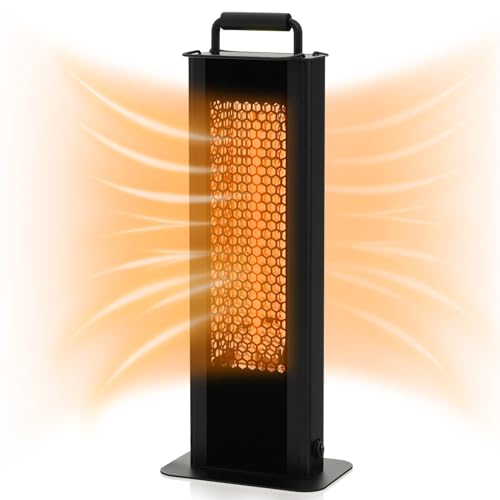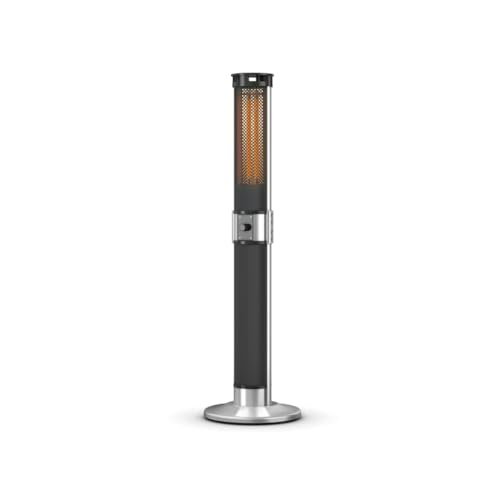Patio Outdoor Gas Heater Tools To Improve Your Daily Life Patio Outdoo…

Elba
2025-01-23 03:28
9
0
본문
 Patio Outdoor Gas Heater
Patio Outdoor Gas HeaterPatio outdoor gas heaters are a simple and easy-to-use method to add warmth and atmosphere to an outdoor space. These heaters use liquefied petrol gas (LPG) to create radiant heat that warms the space surrounding them in a similar way as sunlight.
 Propane patio heaters require a refillable tank.
Propane patio heaters require a refillable tank.Safety
Outdoor gas heaters for patios are becoming increasingly popular in restaurant and home settings to heat a patio or other areas of open. They are easy to use and comfortable, but they also pose safety risks if they are not used or maintained properly. Always read the instructions of the manufacturer and follow all applicable laws and regulations when using a gas-powered patio heater.
Gas patio heaters are designed to heat outdoor areas up to 215 feet. This makes them a great option for large, well-ventilated spaces. A majority of models come with a remote control and timer functions for easy operation. Natural gas patio heaters must be connected to the home's gas patio heaters near me supply, while portable propane models are powered by an internal propane tank.
When setting up the initial setup, it's crucial to make sure that all connection points are secure and leak-free. This can be accomplished by applying a soapy water solution to the hose and gas tank connections. If you notice bubbles or smell gas then shut off the heater. Connect the hoses. It is also recommended to be able to have your gas heater inspected by an expert prior to using.
Don't leave a heater on the patio unattended or close to combustible items, such as curtains, furniture, or rugs. The extreme heat of a heater that is powered by gas patio heater small could cause an explosion. Keep flammable materials away from the heater. Do not place it on the surface that is uneven.
Make sure your gas-burning patio heater has a tip-over switch which will stop the gas flow if the unit tilts more than 15 degrees from its vertical position. This feature is particularly helpful when the patio is exposed to wind, which could potentially cause the unit to tip over.
Carbon monoxide detectors are a great addition to any patio. They will notify you when harmful levels of carbon monoxide have been detected. Carbon monoxide poisoning can have a range of symptoms, such as headaches, fainting and dizziness, therefore it's essential to keep the detector in an accessible location and test it frequently.
A patio outdoor gas heater should be stored inside or in an enclosed area when not in use. If you leave it exposed to the elements could cause the heater to suffer from problems over time, such as rust and fuel lines that are blocked. You should also cover your patio heater when not in use to protect it from insects and other debris.
Easy Setup
Patio heaters keep outdoor living spaces warm and inviting in colder weather. They're a cost-effective and easy way to extend your time in your garden gas patio heater, backyard or other outdoor spaces. Gas patio heaters are available in a variety, including freestanding and tabletop models. Based on your requirements and the size of your space, you can pick between propane or natural models and even one with a decorative stone, hammered bronze or resin wicker finish.
Before you pick a particular type of patio heater, you'll need to determine how much heat you'll need to comfortably accommodate the amount of guests you usually host. This will help you determine how powerful of the patio heater you need to purchase and which type of fuel is the best for your needs. You can determine the number of BTUs needed by multiplying your space's cubic footage by a 23-degree increase in temperature.
If you have a well-ventilated outdoor space, a natural gas heater could be the ideal option for you. These hook directly into the existing natural gas line and are less expensive to run than propane models. However they're not as portable and require extension hoses, which could be a tripping hazard when they're not being used.
Many homes will also benefit from a propane-powered patio heater. These have an impressive heating capacity of up to 250 sq. They come with a range of safety features, including an anti-slant feature that stops the burner if it tilts over 47 degrees. These models have a built in gauge for the level of propane in the tank and adjustable flame settings to fit different seating arrangements.
Gas fire pits are another popular option for heating your patio. They provide the same ambiance and comfort as a fireplace that burns wood, however, they also have the added benefit of being easy to clean and efficient. They are available in a wide range of styles and can be used for dining, entertaining and relaxing. Some come with a protective cage to protect children and pets from burns. They also come with an internal spark ignition to provide rapid lighting.
Convenience
A patio gas heater lets you extend your use of a deck or balcony into the winter. Radiant heat is used to warm the air. It has an engine that burns liquefied propane, natural gas or any other fuel, and then is directed by the hood's reflective surface. The hood is silvered to reflect heat upwards.
You can pick from a range of sizes and models depending on the amount of heat you need and the number of people expected to be sitting around the heater. Some models come with an electric ignition device that allows you to easily ignite the flame. Others require you to use a lighter, such as an outdoor lighter or a match. It is essential to keep a fire extinguisher close to the gas patio heater in the event that there is an accident.
Each model comes with a BTU rating which correlates with its capacity to heat an area. The more efficient the BTU rating, the larger the area you want to heat. If you are unsure check the specifications of the manufacturer.
Propane patio heating units are very popular since they are sold at most gas stations and convenience shops. The drawback is that you must buy individual tanks and the price is higher than an electric patio heater or natural gas patio heater.
When you install a gas patio heater, you can place it in a sheltered area or fixed to the wall. If you select the latter option an expert installer will have to run a natural gas line to the main gas or water supply. This kind of outdoor heating is a great choice if you reside near the ocean, as it will resist corrosion and harsh conditions.
When positioning your patio heater be sure to be placed on a level surface. If you place it on an inclined surface the heater could slide over and create an hazard for fire. It is also important to check regularly for gas leaks by applying a soapy water solution to all connection points. If you notice bubbles appearing at any point, turn off the heater immediately and contact an expert to fix the problem.
Cost
There are a variety of options for heating your outdoor space, from gas patio heaters to fire pits and more. The type you choose is based on a few variables like how much heat you need and the kind of atmosphere you'd like to create.
Electric patio heaters are an excellent option if you want to keep your guests warm with a low cost. They are easy to install and operate and don't require a professional installation. In addition, natural gas patio heaters are permanent fixtures that are connected directly to the natural gas line of your home and can provide a complete range of heating. Since they don't make use of propane tanks, you don't need to worry about running out of fuel and you can organize parties with confidence.
A chimenea is another low-cost option for those who prefer traditional wood-burning fireplaces. These heaters usually contain a flame that burns either natural gas, LPG or propane and employs a reflector to channel the heat towards the patio area. They are not recommended to be used in enclosed areas as the open flame can pose a fire risk and lead to carbon monoxide poisoning.
Portable patio heaters, including propane and natural gas, are available. They can be moved to the ideal location. You can also buy a permanent installation model that's mounted to the wall or a post and stays in place, but be certain to employ an expert for this kind of work. Natural gas patio heaters usually cost more upfront, however they offer the advantage of being connected to your home's gas line and eliminating the need for propane tanks.
The cost of a patio heater will also vary based on its size and the quality. Cheaper units can be found at prices as low as $100, while higher-end models can cost $500 or more. Whatever model you choose, it's crucial to store your unit correctly when not in use. This will stop it from developing problems like rusting or clogging and will help extend its life span.

댓글목록0
댓글 포인트 안내